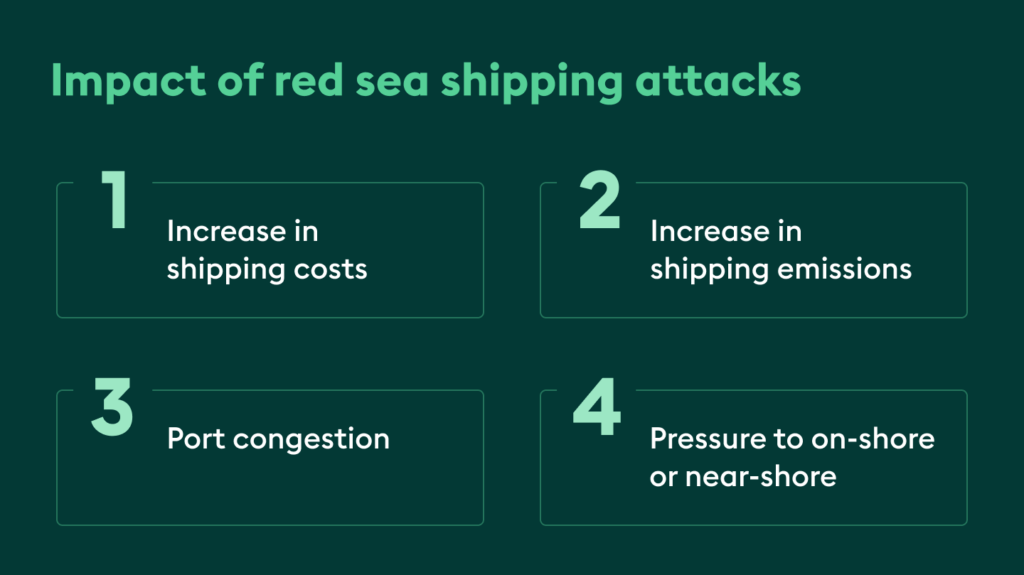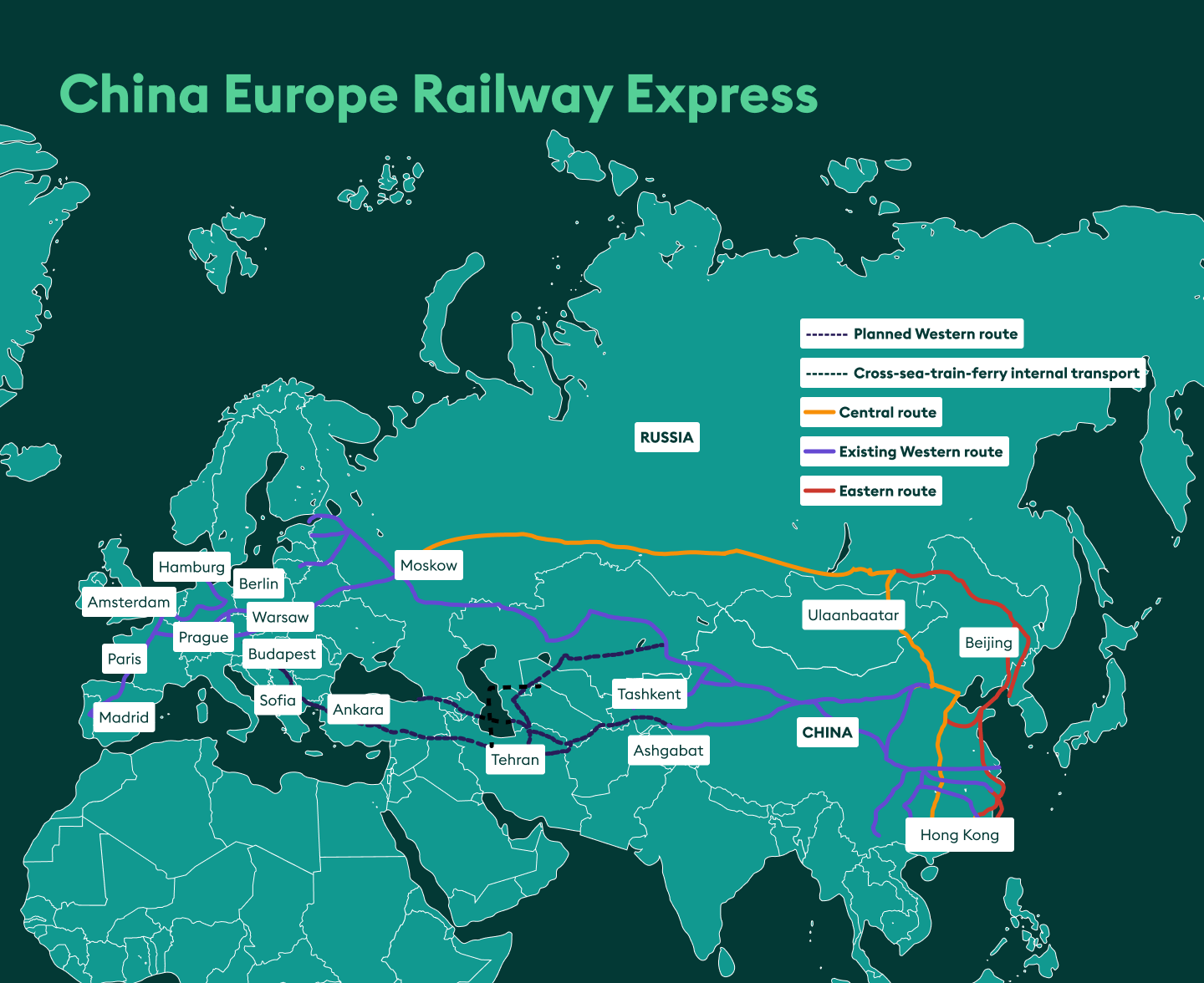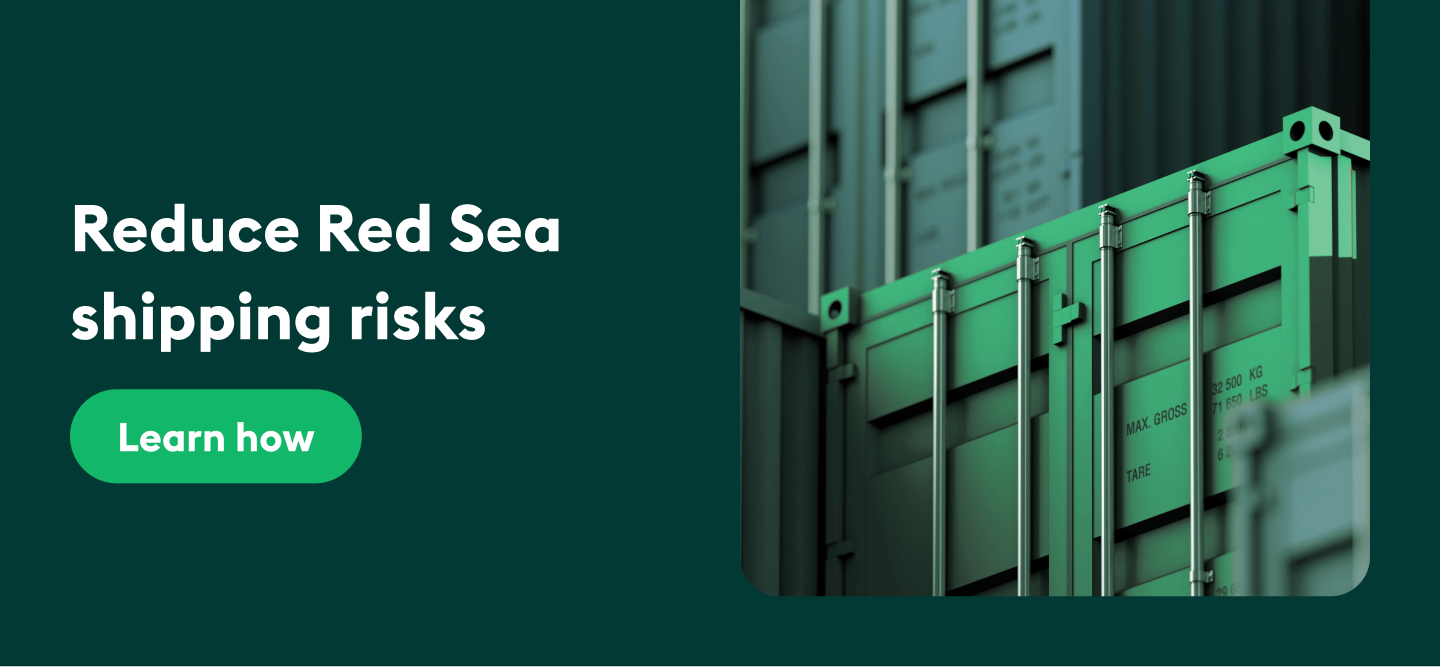Global supply chains are facing disruptions as a result of Red Sea shipping attacks. This blog gives you the latest updates on the situation and how you can mitigate risks for your business.
In a troubling turn of events, the Red Sea, a vital artery for global maritime trade, is facing unprecedented disruptions due to recent attacks by Houthi rebels on ships passing through the region.
Maersk and Hapag-Lloyd among other shipping giants are diverting vessels away from the Red Sea to around the south of Africa, adding to the journey’s time and freight rates.
Although this means an increase in shipping expenses for your business, there are ways to mitigate these costs. One way is to lease containers at the best prices through the Container xChange leasing platform. Our online marketplace can help you find containers in 2,500+ locations globally within seconds from vetted members. You can also find good deals by comparing and negotiating prices – thanks to our complete market price transparency.
Simply use the public search below to browse and compare offers right now! Type in the container type and location, then hit the search button to get started.
25 x 40HC
Container Supplier
Container Company Blurred Name
5
Pick-up charge
User pays
$120
19 Freedays
$44.20 Per diem
Latest updates on Red Sea attacks: Price hikes & pressure of Chinese New Year shipping
Tuesday, January 23
As the Chinese New Year approaches amid ongoing disruptions in the Red Sea, shippers can expect heightened challenges in container availability and vessel space during the pre-Chinese New Year phase. Rerouting through the Cape of Good Hope adds complexity to the situation, contributing to sustained high freight rates. Supply chain managers will need to navigate ongoing schedule disruptions as well.
Looking past Chinese New Year, shippers can anticipate further challenges such as blank sailings and capacity reductions by carriers. The industry is actively working on resetting networks, leading to a continued tightening of container availability and vessel space.
“While high freight rates and increased costs pose midterm challenges, our analysis indicates that these disruptions are not likely to be long-term. Rate reductions are anticipated on the horizon due to the structural overcapacity resulting from a severe market imbalance” says Christian Roeloffs, cofounder and CEO of Container xChange.
Despite the current increase in freight rates, there’s a way you can gain more control over container costs and maintain a dedicated network of reliable suppliers. By using the Container xChange platform, you can connect with 1,500+ shipping companies across the globe. You can use the networks to increase your business’s global presence and add resilience in times of disruptions.
Red Sea shipping: Spike in container rates, risk of inflation
Thursday, January 18
Container shipping rates on major global trade routes have experienced a sharp surge with US and UK air strikes on Yemen stirring fears of a prolonged disruption to global trade in the Red Sea. In response to attacks on Red Sea shipping by Iran-backed Houthi forces, US and British warplanes, ships, and submarines carried out numerous strikes across Yemen, expanding the regional conflict originating from Israel’s war in Gaza.
Already, a significant number of container ships had been diverted away from the nearby Suez Canal. The situation escalated as the US and UK militaries advised all vessels to avoid the conflict zone altogether.
This development has heightened concerns that shipping rates for essential commodities, transported by oil tankers and bulk carriers, could experience a substantial surge. Such a scenario could lead to a fresh wave of global inflation.
Reuters noted that the rates on the Shanghai-Europe route rose by 8.1% to $3,103 per 20-foot container on January 12 when compared to the previous week. The rate for containers to the unaffected US West Coast soared 43.2% to $3,974 per 40-foot container week on week.
“We foresee that the rate hikes will flatten out in the mid to long term. We have enough capacity which can be soaked up in longer transit times and yet not cause permanent capacity crunch,” says Christian Roeloffs, cofounder and CEO of Container xChange.
What is the impact of the Red Sea attacks?
Supply chains will be affected due to ships being diverted away from the Red Sea. Let’s take a look at the impact this will have on global trade.
Increase in shipping costs
The charges for transporting a 40-foot container from China to Europe through the Red Sea have surged to about $4,000 in January 2024. Shippers are also compelled to invest more in security measures and pay war risk premiums. For instance, war risk premiums at Ashdod Port stand at 0.65% of a vessel’s total value, making it one of the higher-risk destinations.
Maersk, a major shipping company has also implemented an Emergency Risk Surcharge (ERS) for all customer cargo discharged at Israel terminals. This increase in shipping costs will inevitably reach the end consumers, who may experience higher prices for a variety of products.
Increase in shipping emissions
Redirecting vessels through the Cape of Good Hope, rather than utilizing the more direct route through the Red Sea will increase shipping emissions. This longer journey adds considerable distance to the maritime route, requiring vessels to consume more fuel and release higher levels of greenhouse gases into the atmosphere.
Port congestion
The ongoing crisis in the Red Sea could lead to port congestions and port delays due to uncertain vessel schedules and equipment shortages triggered by container imbalance. These challenges could be further exacerbated by the approaching Chinese/Lunar New Year as well as the ongoing Panama Canal restrictions. Congestion at the port could further increase the shipping times and cost of companies.
Pressure to on-shore or near-shore
Since 2020, many macro events have contributed to revealing the fragility of the global supply chain. This includes the the Russia-Ukraine war, the Panama Canal drought, and more recently the Red Sea attacks. As a result, supply chain leaders and businesses are exploring several options to build more resilient supply chains.
On-shoring and nearshoring in supply chains have gained popularity with more and more businesses opting to shift their manufacturing and production services back to their country or a neighboring country. The main goal of these practices is to help companies regain control over the end-to-end supply chain.

Alternatives for shipping through the Red Sea
The Red Sea serves as a vital pathway to the Suez Canal, a critical artery where 50-60 ships transit daily, 19,000 on average, annually. In recent months, the Suez Canal also witnessed a rise in US energy and grain exports, along with eastbound container imports due to the Panama Canal drought.
However, given the ongoing conflict at the Suez Canal, businesses are exploring alternative routes to ensure uninterrupted supply chains and secure their trade interests.
China Europe Railway Express (CRE)
The China-Europe Railway Express, or China Railway Express (CRE), is a network of international multimodal container rail services that connects cities in China with cities in Europe. It provides overland transportation for cargo, bypassing the traditional maritime routes that typically connect these two regions.

For many shipping companies, the China-Europe Railway Express has become a more reliable alternative for transporting via sea – as the CRE is faster and more cost-efficient.
Cape of Good Hope
Another alternative involves navigating around the Cape of Good Hope near Cape Town, leading ships along the western coast of Africa. This journey takes at least 30 days to ship, as compared to the Red Sea which only takes 25 days. Additionally, navigating around the Cape of Good Hope will add 3,500 nautical miles and cost shipping companies millions of dollars.

However, the repercussions of avoiding the Red Sea and diverting through the longer route of the Cape of Good Hope extend beyond just increased distance and financial burden as you read above. Despite the impacts, there are ways to mitigate the risks and improve your supply chain resilience. Read on to find out how.
How to mitigate the Red Sea shipping risks with Container xChange
In the wake of the Red Sea attacks, navigating the longer route around the Cape of Good Hope may escalate your shipping expenses. Although your foremost concern should be ensuring the safety of your cargo and containers; there are ways you can handle the Red Sea disruptions effectively. Here’s how:
Hold adequate safety stocks
Maintaining sufficient safety stocks is crucial for absorbing disruptions without significantly impacting inventory levels. For this, you can use the Container xChange trading platform to buy containers at the best prices. Compare container offers from multiple sellers, and choose the one that suits you best. We have 50,000+ containers available in 2,500+ locations worldwide so you can be sure that you’re buying them at the lowest possible prices.
Enhance flexibility
Operating with multiple networks and suppliers adds resilience, reducing dependency on a single source. Container xChange platform provides you access to 1,500+ vetted shipping companies including freight forwarders, NVOCCs, and container suppliers. You can use the networks to increase your business’s global presence and add resilience in times of disruptions. We also have public profiles of all our members where you can check out their ratings and ensure you’re working with the right partners for your business.
Leverage technology and keep up with industry trends
Embracing technology is paramount for identifying problems and making informed decisions, ensuring a proactive response to disruptions. The xChange Insights tool ensures that you:
- Identify the best locations to buy, sell, or lease units
- Quickly assess your potential costs and profits
- Make a good deal even in a new market
- Always keep up with market trends
Lease containers at best rates
And finally, on the Container xChange platform, you can lease containers for one-way from vetted suppliers. By leasing containers, you don’t have to invest much in maintaining your inventory. All you’ve to do is fill in your desired container type and your destination on our platform.
Contact the suppliers directly (via chats and calls) to source your containers and negotiate rates, terms, and conditions to ensure the best prices. You can choose any container type you need at competitive rates and keep your transaction safe with our easy payment handling feature – the xChange wallet.
You get all this on a single platform. By joining the Container xChange platform, you can ensure that your business effectively navigates the Red Sea attacks and other future disruptions in the global supply chain. Many companies have already built a resilient business by using our platform. And now, you can do that too! Simply click the banner below to learn how you can do the same for your shipping business.
Red Sea shipping: Common FAQs
What is the Red Sea attack?
The Red Sea crisis began on October 19, 2023, when Yemen's Houthi movement initiated a series of attacks, targeting Southern Israel and the ships in the Red Sea it claimed were linked to Israel.
Where is the Red Sea located?
The Red Sea is a narrow inland sea between the Arabian Peninsula and Africa. It extends southeast from Suez, Egypt (initially as the Gulf of Suez), for about 1,200 mi (1,930 km) to the Strait of Mandeb, which connects with the Gulf of Aden and then with the Arabian Sea.
Is the Suez Canal in the Red Sea?
Yes, the Suez Canal is an artificial sea-level waterway in Egypt, connecting the Mediterranean Sea to the Red Sea.




